Post Syndicated from Saurabh Bhutyani original https://aws.amazon.com/blogs/big-data/reduce-costs-and-increase-resource-utilization-of-apache-spark-jobs-on-kubernetes-with-amazon-emr-on-amazon-eks/
Amazon EMR on Amazon EKS is a deployment option for Amazon EMR that allows you to run Apache Spark on Amazon Elastic Kubernetes Service (Amazon EKS). If you run open-source Apache Spark on Amazon EKS, you can now use Amazon EMR to automate provisioning and management, and run Apache Spark up to three times faster. If you already use Amazon EMR, you can run Amazon EMR-based Apache Spark applications with other types of applications on the same Amazon EKS cluster to improve resource utilization and simplify infrastructure management.
Earlier this year, we launched support for pod templates in Amazon EMR on Amazon EKS to make it simpler to run Spark jobs on shared Amazon EKS clusters. A pod is a group of one or more containers, with shared storage and network resources, and a specification for how to run the containers. Pod templates are specifications that determine how each pod runs.
When you submit analytics jobs to a virtual cluster on Amazon EMR on EKS, Amazon EKS schedules the pods to execute the jobs. Your Amazon EKS cluster may have multiple node groups and instance types attached to it, and these pods could get scheduled on any of those Amazon Elastic Compute Cloud (Amazon EC2) instances. Organizations today have requirements to have better resource utilization, running jobs on specific instances based on instance type, amount of disk, disk IOPS, and more, and also control costs when jobs are submitted by multiple teams to a virtual cluster on Amazon EMR on EKS.
In this post, we look at support in Amazon EMR on EKS for Spark’s pod template feature and how to use that for resource isolation and controlling costs.
Pod templates have many uses cases:
- Cost reduction – To reduce costs, you can schedule Spark driver pods to run on EC2 On-Demand Instances while scheduling Spark executor pods to run on EC2 Spot Instances.
- Resource utilization – To increase resource utilization, you can support multiple teams running their workloads on the same Amazon EKS cluster. Each team gets a designated Amazon EC2 node group to run their workloads on. You can use pod templates to enforce scheduling on the relevant node groups.
- Logging and monitoring – To improve monitoring, you can run a separate sidecar container to forward logs to your existing monitoring application.
- Initialization – To run initialization steps, you can run a separate init container that is run before the Spark main container starts. You can have your init container run initialization steps, such as downloading dependencies or generating input data. Then the Spark main container consumes the data.
Prerequisites
To follow along with the walkthrough, ensure that you have the following resources created:
Solution overview
We look at a common use in organizations where multiple teams want to submit jobs and need resource isolation and cost reduction. In this post, we simulate two teams trying to submit jobs to the Amazon EMR on EKS cluster and see how to isolate the resources between them when running jobs. We also look at cost reduction by having the Spark driver run on EC2 On-Demand Instances while using Spark executors to run on EC2 Spot Instances. The following diagram illustrates this architecture.

To implement the solution, we complete the following high-level steps:
- Create an Amazon EKS cluster.
- Create an Amazon EMR virtual cluster.
- Set up IAM roles.
- Create pod templates.
- Submit Spark jobs.
Create an Amazon EKS cluster
To create your Amazon EKS cluster, complete the following steps:
- Create a new file (
create-cluster.yaml) with the following contents:
apiVersion: eksctl.io/v1alpha5
kind: ClusterConfig
metadata:
name: blog-eks-cluster
region: us-east-1
managedNodeGroups:
# On-Demand nodegroup for job submitter/controller
- name:controller
instanceTypes: ["m5.xlarge", "m5a.xlarge","m5d.xlarge"]
desiredCapacity: 1
# On-Demand nodegroup for team-1 Spark driver
- name: team-1-driver
labels: { team: team-1-spark-driver }
taints: [{ key: team-1, value: general-purpose, effect: NoSchedule }]
instanceTypes: ["m5.xlarge", "m5a.xlarge","m5d.xlarge"]
desiredCapacity: 3
# Spot nodegroup for team-1 Spark executors
- name: team-1-executor
labels: { team: team-1-spark-executor }
taints: [{ key: team-1, value: general-purpose, effect: NoSchedule }]
instanceTypes: ["m5.2xlarge", "m5a.2xlarge", "m5d.2xlarge"]
desiredCapacity: 5
spot: true
# On-Demand nodegroup for team-2 Spark driver
- name: team-2-driver
labels: { team: team-2-spark-driver }
taints: [{ key: team-2, value: compute-intensive , effect: NoSchedule }]
instanceTypes: ["c5.xlarge", "c5a.xlarge", "c5d.xlarge"]
desiredCapacity: 3
# Spot nodegroup for team-2 Spark executors
- name: team-2-executor
labels: { team: team-2-spark-executor }
taints: [{ key: team-2, value: compute-intensive , effect: NoSchedule }]
instanceTypes: ["c5.2xlarge","c5a.2xlarge","c5d.2xlarge"]
spot: true
desiredCapacity: 5
- Install the AWS CLI.
You can use version 1.18.157 or later, or version 2.0.56 or later. The following command is for Linux OS:
curl "https://awscli.amazonaws.com/awscli-exe-linux-x86_64.zip" -o "awscliv2.zip"
unzip awscliv2.zip
sudo ./aws/install
For other operating systems, see Installing, updating, and uninstalling the AWS CLI version.
- Install eksctl (you must have eksctl 0.34.0 version or later):
curl --silent --location "https://github.com/weaveworks/eksctl/releases/latest/download/eksctl_$(uname -s)_amd64.tar.gz" | tar xz -C /tmp
sudo mv /tmp/eksctl /usr/local/bin
eksctl version
- Install kubectl:
curl -o kubectl https://amazon-eks.s3.us-west-2.amazonaws.com/1.18.8/2020-09-18/bin/linux/amd64/kubectl
chmod +x ./kubectl
sudo mv ./kubectl /usr/local/bin
- Create the Amazon EKS cluster using the create-cluster.yaml config file created in earlier steps:
eksctl create cluster -f create-cluster.yaml
This step launches an Amazon EKS cluster with five managed node groups: two node groups each for team-1 and team-2, one node group for Spark drivers using EC2 On-Demand capacity, while another one for Spark executors using EC2 Spot capacity.
After the Amazon EKS cluster is created, run the following command to check the node groups:
eksctl get nodegroups --cluster blog-eks-cluster
You should see a response similar to the following screenshot.

Create an Amazon EMR virtual cluster
We launch the EMR virtual cluster in the default namespace:
eksctl create iamidentitymapping \
--cluster blog-eks-cluster \
--namespace default \
--service-name "emr-containers"
aws emr-containers create-virtual-cluster \
--name blog-emr-on-eks-cluster \
--container-provider '{"id": "blog-eks-cluster","type": "EKS","info": {"eksInfo": {"namespace": "default"}} }'
The command creates an EMR virtual cluster in the Amazon EKS default namespace and outputs the virtual cluster ID:
{
"id": "me9zfn2lbt241wxhxg81gjlxb",
"name": "blog-emr-on-eks-cluster",
"arn": "arn:aws:emr-containers:us-east-1:xxxx:/virtualclusters/me9zfn2lbt241wxhxg81gjlxb"
}
Note the ID of the EMR virtual cluster to use to run the jobs.
Set up an IAM role
In this step, we create an Amazon EMR Spark job execution role with the following IAM policy:
{
"Version": "2012-10-17",
"Statement": [
{
"Effect": "Allow",
"Action": [
"s3:PutObject",
"s3:GetObject",
"s3:ListBucket"
],
"Resource": "*"
},
{
"Effect": "Allow",
"Action": [
"logs:PutLogEvents",
"logs:CreateLogStream",
"logs:DescribeLogGroups",
"logs:DescribeLogStreams",
"logs:CreateLogGroup"
],
"Resource": [
"arn:aws:logs:*:*:*"
]
}
]
}
Navigate to the IAM console to create the role. Let’s call the role EMR_EKS_Job_Execution_Role. For more information, see Creating IAM roles and Creating IAM Policies.
Set up the trust policy for the role with the following command:
aws emr-containers update-role-trust-policy \
--cluster-name blog-eks-cluster \
--namespace default \
--role-name EMR_EKS_Job_Execution_Role
Enable IAM roles for service accounts (IRSA) on the Amazon EKS cluster:
eksctl utils associate-iam-oidc-provider --cluster blog-eks-cluster --approve
Create pod templates with node selectors and taints
In this step, we create pod templates for the Team-1 Spark driver pods and Spark executor pods, and templates for the Team-2 Spark driver pods and Spark executor pods.
Run the following commands to view the nodes corresponding to team-1 for the label team=team-1-spark-driver:
$ kubectl get nodes --selector team=team-1-spark-driver
NAME STATUS ROLES AGE VERSION
ip-192-168-123-197.ec2.internal Ready <none> 107m v1.20.4-eks-6b7464
ip-192-168-25-114.ec2.internal Ready <none> 107m v1.20.4-eks-6b7464
ip-192-168-91-201.ec2.internal Ready <none> 107m v1.20.4-eks-6b7464
Similarly, you can view the nodes corresponding to team-1 for the label team=team-1-spark-executor. You can repeat the same commands to view the nodes corresponding to team-2 by changing the role labels:
$ kubectl get nodes --selector team=team-1-spark-executor
NAME STATUS ROLES AGE VERSION
ip-192-168-100-76.ec2.internal Ready <none> 107m v1.20.4-eks-6b7464
ip-192-168-5-196.ec2.internal Ready <none> 67m v1.20.4-eks-6b7464
ip-192-168-52-131.ec2.internal Ready <none> 78m v1.20.4-eks-6b7464
ip-192-168-58-137.ec2.internal Ready <none> 107m v1.20.4-eks-6b7464
ip-192-168-70-68.ec2.internal Ready <none> 107m v1.20.4-eks-6b7464
You can constrain a pod so that it can only run on particular set of nodes. There are several ways to do this and the recommended approaches all use label selectors to facilitate the selection. In some circumstances, you may want to control which node the pod deploys to; for example, to ensure that a pod ends up on a machine with an SSD attached to it, or to co-locate pods from two different services that communicate a lot into the same availability zone.
nodeSelector is the simplest recommended form of node selection constraint. nodeSelector is a field of PodSpec. It specifies a map of key-value pairs. For the pod to be eligible to run on a node, the node must have each of the indicated key-value pairs as labels.
Taints are used to repel pods from specific nodes. Taints and tolerations work together to ensure that pods aren’t scheduled onto inappropriate nodes. One or more taints are applied to a node; this marks that the node shouldn’t accept any pods that don’t tolerate the taints. Amazon EKS supports configuring Kubernetes taints through managed node groups. Taints and tolerations are a flexible way to steer pods away from nodes or evict pods that shouldn’t be running. A few of the use cases are dedicated nodes: If you want to dedicate a set of nodes, such as GPU instances for exclusive use by a particular group of users, you can add a taint to those nodes, and then add a corresponding toleration to their pods.
nodeSelector provides a very simple way to attract pods to nodes with particular labels. Taints on the other hand are used to repel pods from specific nodes. You can apply taints to a team’s node group and use pod templates to apply a corresponding toleration to their workload. This ensures that only the designated team can schedule jobs to their node group. The label, using affinity, directs the application to the team’s designated node group and a toleration enables it to schedule over the taint. During the Amazon EKS cluster creation, we provided taints for each of the managed node groups. We create pod templates to specify both nodeSelector and tolerations to schedule work to a team’s node group.
- Create a new file
team-1-driver-pod-template.yaml with the following contents:
apiVersion: v1
kind: Pod
spec:
nodeSelector:
team: team-1-spark-driver
tolerations:
- key: "team-1"
operator: "Equal"
value: "general-purpose"
effect: "NoSchedule"
containers:
- name: spark-kubernetes-driver
Here, we specify nodeSelector as team: team-1-spark-driver. This makes sure that Spark driver pods are running on nodes created as part of node group team-1-spark-driver, which we created for Team-1. At the same time, we have a toleration for nodes tainted as team-1.
- Create a new file
team-1-executor-pod-template.yaml with the following contents:
apiVersion: v1
kind: Pod
spec:
nodeSelector:
team: team-1-spark-executor
tolerations:
- key: "team-1"
operator: "Equal"
value: "general-purpose"
effect: "NoSchedule"
containers:
- name: spark-kubernetes-executor
Here, we specify nodeSelector as team: team-1-spark-executor. This makes sure that Spark executor pods are running on nodes created as part of node group team-1-spark-executor, which we created for Team-1. At the same time, we have a toleration for nodes tainted as team-1.
- Create a new file
team-2-driver-pod-template.yaml with the following contents:
apiVersion: v1
kind: Pod
spec:
nodeSelector:
team: team-2-spark-driver
tolerations:
- key: "team-2"
operator: "Equal"
value: "compute-intensive"
effect: "NoSchedule"
containers:
- name: spark-kubernetes-driver
Here, we specify nodeSelector as team: team-2-spark-driver. This makes sure that Spark driver pods are running on nodes created as part of node group team-2-spark-driver, which we created for Team-2. At the same time, we have a toleration for nodes tainted as team-2.
- Create a new file
team-2-executor-pod-template.yaml with the following contents.
apiVersion: v1
kind: Pod
spec:
nodeSelector:
team: team-2-spark-executor
tolerations:
- key: "team-2"
operator: "Equal"
value: "compute-intensive"
effect: "NoSchedule"
containers:
- name: spark-kubernetes-executor
Here, we specify nodeSelector as team: team-2-spark-executor. This makes sure that Spark executor pods are running on nodes created as part of node group team-2-spark-executor, which we created for Team-2. At the same time, we have a toleration for nodes tainted as team-2.
Save the preceding pod template files to your S3 bucket or refer to them using the following links:
s3://aws-data-analytics-workshops/emr-eks-workshop/scripts/team-1-driver-template.yamls3://aws-data-analytics-workshops/emr-eks-workshop/scripts/team-1-executor-template.yamls3://aws-data-analytics-workshops/emr-eks-workshop/scripts/team-2-driver-template.yamls3://aws-data-analytics-workshops/emr-eks-workshop/scripts/team-2-executor-template.yaml
Submit Spark jobs
In this step, we submit the Spark jobs and observe the output.
Substitute the values of the EMR virtual cluster ID, EMR_EKS_Job_Execution_Role ARN, and S3_Bucket:
export EMR_EKS_CLUSTER_ID=<<EMR virtual cluster id>>
export EMR_EKS_EXECUTION_ARN=<<EMR_EKS_Job_Execution_Role ARN>>
export S3_BUCKET=<<S3_Bucket>>
Submit the Spark job:
aws emr-containers start-job-run \
--virtual-cluster-id ${EMR_EKS_CLUSTER_ID} \
--name spark-pi-pod-template \
--execution-role-arn ${EMR_EKS_EXECUTION_ARN} \
--release-label emr-5.33.0-latest \
--job-driver '{
"sparkSubmitJobDriver": {
"entryPoint": "s3://aws-data-analytics-workshops/emr-eks-workshop/scripts/pi.py",
"sparkSubmitParameters": "--conf spark.executor.instances=6 --conf spark.executor.memory=2G --conf spark.executor.cores=2 --conf spark.driver.cores=1"
}
}' \
--configuration-overrides '{
"applicationConfiguration": [
{
"classification": "spark-defaults",
"properties": {
"spark.driver.memory":"2G",
"spark.kubernetes.driver.podTemplateFile":"s3://aws-data-analytics-workshops/emr-eks-workshop/scripts/team-1-driver-template.yaml",
"spark.kubernetes.executor.podTemplateFile":"s3://aws-data-analytics-workshops/emr-eks-workshop/scripts/team-1-executor-template.yaml"
}
}
],
"monitoringConfiguration": {
"cloudWatchMonitoringConfiguration": {
"logGroupName": "/emr-containers/jobs",
"logStreamNamePrefix": "blog-emr-eks"
},
"s3MonitoringConfiguration": {
"logUri": "'"$S3_BUCKET"'/logs/"
}
}
}'
After submitting the job, run the following command to check if the Spark driver and executor pods are created and running:
You should see output similar to the following:
$ kubectl get pods
NAME READY STATUS RESTARTS AGE
00000002uf8fut3g6o6-m4nfz 3/3 Running 0 25s
spark-00000002uf8fut3g6o6-driver 2/2 Running 0 14s
Let’s check the pods deployed on team-1’s On-Demand Instances:
$ for n in $(kubectl get nodes -l team=team-1-spark-driver --no-headers | cut -d " " -f1); do echo "Pods on instance ${n}:";kubectl get pods -n default --no-headers --field-selector spec.nodeName=${n} ; echo ; done
Pods on instance ip-192-168-27-110.ec2.internal:
No resources found in default namespace.
Pods on instance ip-192-168-59-167.ec2.internal:
spark-00000002uf8fut3g6o6-driver 2/2 Running 0 29s
Pods on instance ip-192-168-73-223.ec2.internal:
No resources found in default namespace.
Let’s check the pods deployed on team-1’s Spot Instances:
$ for n in $(kubectl get nodes -l team=team-1-spark-executor --no-headers | cut -d " " -f1); do echo "Pods on instance ${n}:";kubectl get pods -n default --no-headers --field-selector spec.nodeName=${n} ; echo ; done
Pods on instance ip-192-168-108-90.ec2.internal:
No resources found in default namespace.
Pods on instance ip-192-168-39-31.ec2.internal:
No resources found in default namespace.
Pods on instance ip-192-168-87-75.ec2.internal:
pythonpi-1623711779860-exec-3 0/2 Running 0 27s
pythonpi-1623711779937-exec-4 0/2 Running 0 26s
Pods on instance ip-192-168-88-145.ec2.internal:
pythonpi-1623711779748-exec-2 0/2 Running 0 27s
Pods on instance ip-192-168-92-149.ec2.internal:
pythonpi-1623711779097-exec-1 0/2 Running 0 28s
pythonpi-1623711780071-exec-5 0/2 Running 0 27s
When the executor pods are running, you should see output similar to the following:
$ kubectl get pods
NAME READY STATUS RESTARTS AGE
00000002uf8fut3g6o6-m4nfz 3/3 Running 0 56s
pythonpi-1623712009087-exec-1 0/2 Running 0 2s
pythonpi-1623712009603-exec-2 0/2 Running 0 2s
pythonpi-1623712009735-exec-3 0/2 Running 0 2s
pythonpi-1623712009833-exec-4 0/2 Running 0 2s
pythonpi-1623712009945-exec-5 0/2 Running 0 1s
spark-00000002uf8fut3g6o6-driver 2/2 Running 0 45s
To check the status of the jobs on Amazon EMR console, choose the cluster on the Virtual Clusters page. You can also check the Spark History Server by choosing View logs.

When the job is complete, go to Amazon CloudWatch Logs and check the output by choosing the log (/emr-containers/jobs/<<xxx-driver>>/stdout) on the Log groups page. You should see output similar to the following screenshot.

Now submit the Spark job as team-2 and specify the pod template files pointing to team-2’s driver and executor pod specifications and observe where the pods are created:
aws emr-containers start-job-run \
--virtual-cluster-id ${EMR_EKS_CLUSTER_ID} \
--name spark-pi-pod-template \
--execution-role-arn ${EMR_EKS_EXECUTION_ARN} \
--release-label emr-5.33.0-latest \
--job-driver '{
"sparkSubmitJobDriver": {
"entryPoint": "s3://aws-data-analytics-workshops/emr-eks-workshop/scripts/pi.py",
"sparkSubmitParameters": "--conf spark.executor.instances=6 --conf spark.executor.memory=2G --conf spark.executor.cores=2 --conf spark.driver.cores=1"
}
}' \
--configuration-overrides '{
"applicationConfiguration": [
{
"classification": "spark-defaults",
"properties": {
"spark.driver.memory":"2G",
"spark.kubernetes.driver.podTemplateFile":"s3://aws-data-analytics-workshops/emr-eks-workshop/scripts/team-2-driver-template.yaml",
"spark.kubernetes.executor.podTemplateFile":"s3://aws-data-analytics-workshops/emr-eks-workshop/scripts/team-2-executor-template.yaml"
}
}
],
"monitoringConfiguration": {
"cloudWatchMonitoringConfiguration": {
"logGroupName": "/emr-containers/jobs",
"logStreamNamePrefix": "blog-emr-eks"
},
"s3MonitoringConfiguration": {
"logUri": "'"$S3_BUCKET"'/logs/"
}
}
}'
We can check the status of the job on the Amazon EMR console and also by checking the CloudWatch logs.
Now, let’s run a use case where Team-1 doesn’t specify the correct toleration in the Spark driver’s pod template. We use the following pod template. As per the toleration specification, Team-1 is trying to schedule a Spark driver pod on nodes with label team-1-spark-driver and also wants it to get scheduled over nodes tainted as team-2. Because team-1 doesn’t have any nodes with that specification, we should see an error.
apiVersion: v1
kind: Pod
spec:
nodeSelector:
team: team-1-spark-driver
tolerations:
- key: "team-2"
operator: "Equal"
value: "compute-intensive"
effect: "NoSchedule"
containers:
- name: spark-kubernetes-driver
Submit the Spark job using this new pod template:
aws emr-containers start-job-run \
--virtual-cluster-id ${EMR_EKS_CLUSTER_ID} \
--name spark-pi-pod-template \
--execution-role-arn ${EMR_EKS_EXECUTION_ARN} \
--release-label emr-5.33.0-latest \
--job-driver '{
"sparkSubmitJobDriver": {
"entryPoint": "s3://aws-data-analytics-workshops/emr-eks-workshop/scripts/pi.py",
"sparkSubmitParameters": "--conf spark.executor.instances=6 --conf spark.executor.memory=2G --conf spark.executor.cores=2 --conf spark.driver.cores=1"
}
}' \
--configuration-overrides '{
"applicationConfiguration": [
{
"classification": "spark-defaults",
"properties": {
"spark.driver.memory":"2G",
"spark.kubernetes.driver.podTemplateFile":"s3://aws-data-analytics-workshops/emr-eks-workshop/scripts/team-1-driver-template-negative.yaml",
"spark.kubernetes.executor.podTemplateFile":"s3://aws-data-analytics-workshops/emr-eks-workshop/scripts/team-1-executor-template.yaml"
}
}
],
"monitoringConfiguration": {
"cloudWatchMonitoringConfiguration": {
"logGroupName": "/emr-containers/jobs",
"logStreamNamePrefix": "blog-emr-eks"
},
"s3MonitoringConfiguration": {
"logUri": "'"$S3_BUCKET"'/logs/"
}
}
}'
Run the following command to check the status of the Spark driver pod:
$ kubectl get pods
NAME READY STATUS RESTARTS AGE
00000002uott6onmu8p-7t64m 3/3 Running 0 36s
spark-00000002uott6onmu8p-driver 0/2 Pending 0 25s
Let’s describe the driver pod to check the details. You should notice a failed event similar to Warning FailedScheduling 28s (x3 over 31s) default-scheduler 0/17 nodes are available: 8 node(s) had taint {team-1: general-purpose}, that the pod didn't tolerate, 9 node(s) didn't match Pod's node affinity
$ kubectl describe pod <<driver-pod-name>>
Name: spark-00000002uott6onmu8p-driver
Namespace: default
......
QoS Class: Burstable
Node-Selectors: team=team-1-spark-driver
Tolerations: node.kubernetes.io/not-ready:NoExecute op=Exists for 300s
node.kubernetes.io/unreachable:NoExecute op=Exists for 300s
team-2=compute-intensive:NoSchedule
Events:
Type Reason Age From Message
---- ------ ---- ---- -------
Warning FailedScheduling 28s (x3 over 31s) default-scheduler 0/17 nodes are available: 8 node(s) had taint {team-1: general-purpose}, that the pod didn't tolerate, 9 node(s) didn't match Pod's node affinity..
This shows that if the pod template doesn’t have the right tolerations, the tainted nodes don’t tolerate the pod and don’t schedule over those nodes.
Clean up
Don’t forget to clean up the resources you created to avoid any unnecessary charges.
- Delete all the virtual clusters that you created:
#List all the virtual cluster ids
aws emr-containers list-virtual-clusters
#Delete virtual cluster by passing virtual cluster id
aws emr-containers delete-virtual-cluster —id <virtual-cluster-id>
- Delete the Amazon EKS cluster:
eksctl delete cluster blog-eks-cluster
- Delete the
EMR_EKS_Job_Execution_Role role and policies.
Summary
In this post, we saw how to create an Amazon EKS cluster, configure Amazon EKS managed node groups, create an EMR virtual cluster on Amazon EKS, and submit Spark jobs. With pod templates, we saw how to manage resource isolation between various teams when submitting jobs and also learned how to reduce cost by running Spark driver pods on EC2 On-Demand Instances and Spark executor pods on EC2 Spot Instances.
To get started with pod templates, try out the Amazon EMR on EKS workshop or see the following resources:
About the Author
 Saurabh Bhutyani is a Senior Big Data specialist solutions architect at Amazon Web Services. He is an early adopter of open source Big Data technologies. At AWS, he works with customers to provide architectural guidance for running analytics solutions on Amazon EMR, Amazon Athena, AWS Glue, and AWS Lake Formation
Saurabh Bhutyani is a Senior Big Data specialist solutions architect at Amazon Web Services. He is an early adopter of open source Big Data technologies. At AWS, he works with customers to provide architectural guidance for running analytics solutions on Amazon EMR, Amazon Athena, AWS Glue, and AWS Lake Formation
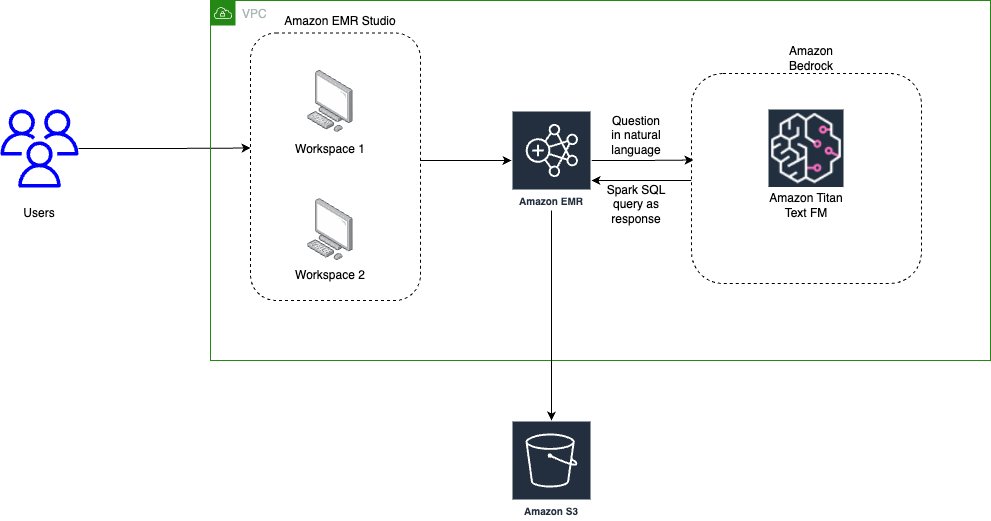






 Saurabh Bhutyani is a Principal Analytics Specialist Solutions Architect at AWS. He is passionate about new technologies. He joined AWS in 2019 and works with customers to provide architectural guidance for running generative AI use cases, scalable analytics solutions and data mesh architectures using AWS services like Amazon Bedrock, Amazon SageMaker, Amazon EMR, Amazon Athena, AWS Glue, AWS Lake Formation, and Amazon DataZone.
Saurabh Bhutyani is a Principal Analytics Specialist Solutions Architect at AWS. He is passionate about new technologies. He joined AWS in 2019 and works with customers to provide architectural guidance for running generative AI use cases, scalable analytics solutions and data mesh architectures using AWS services like Amazon Bedrock, Amazon SageMaker, Amazon EMR, Amazon Athena, AWS Glue, AWS Lake Formation, and Amazon DataZone. Harsh Vardhan is an AWS Senior Solutions Architect, specializing in analytics. He has over 8 years of experience working in the field of big data and data science. He is passionate about helping customers adopt best practices and discover insights from their data.
Harsh Vardhan is an AWS Senior Solutions Architect, specializing in analytics. He has over 8 years of experience working in the field of big data and data science. He is passionate about helping customers adopt best practices and discover insights from their data.







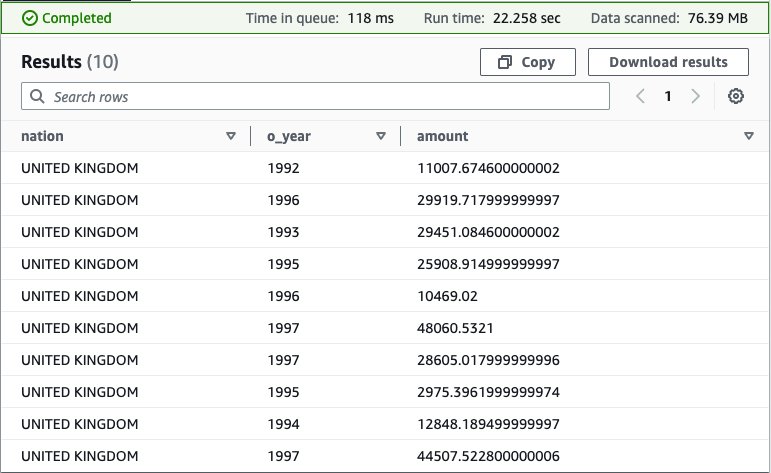
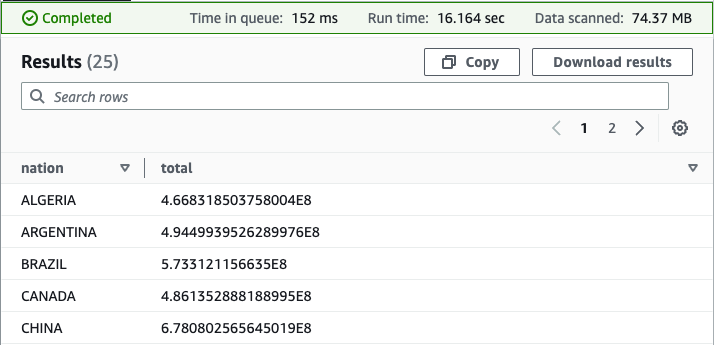
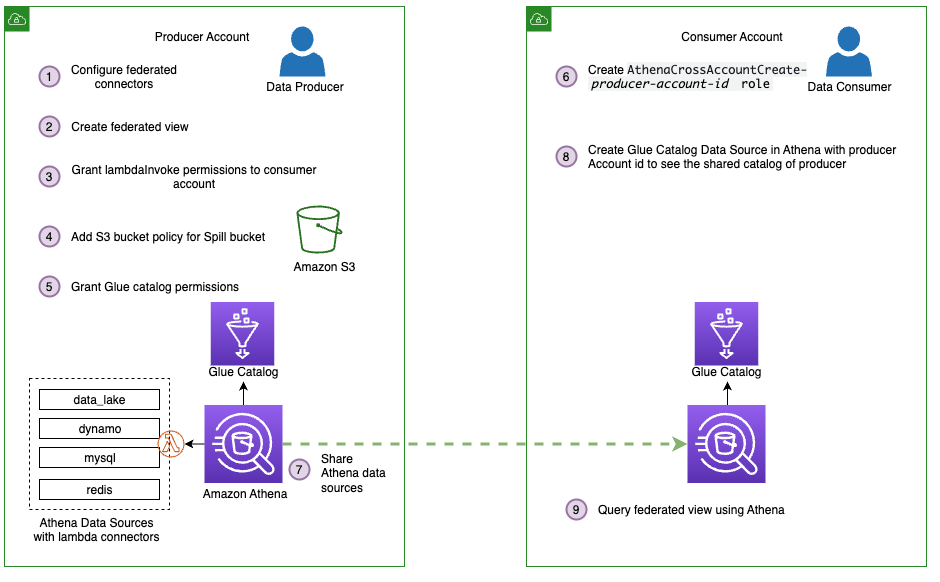
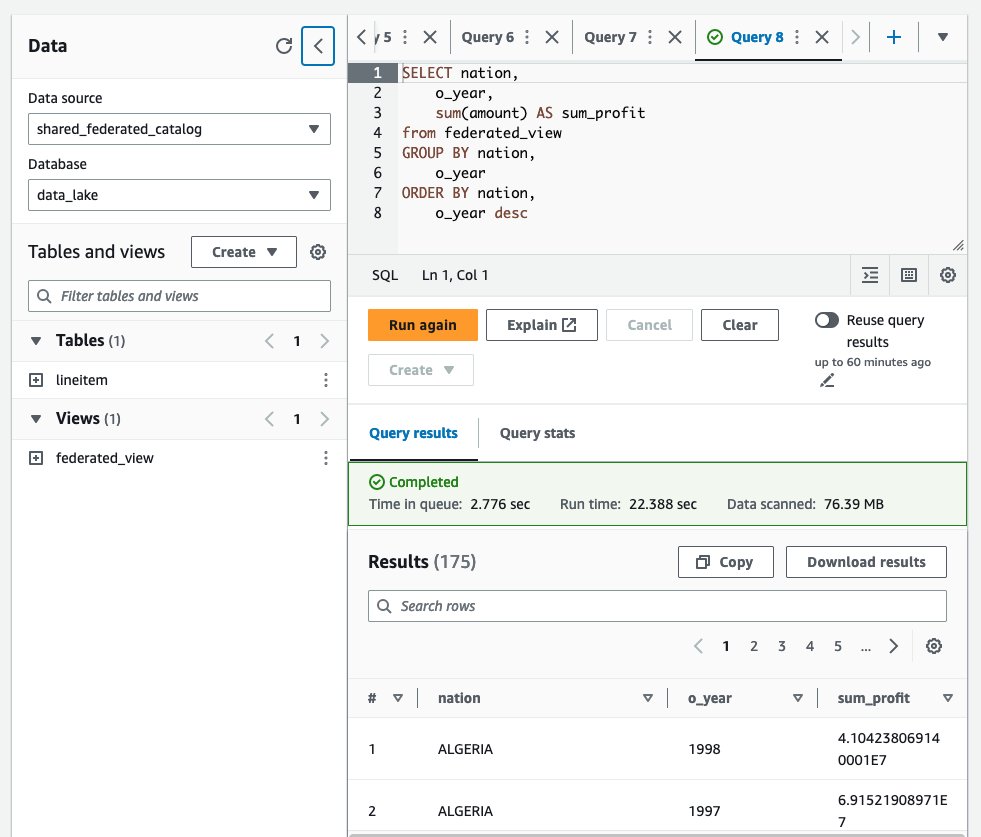

 Pathik Shah is a Sr. Big Data Architect on Amazon Athena. He joined AWS in 2015 and has been focusing in the big data analytics space since then, helping customers build scalable and robust solutions using AWS analytics services.
Pathik Shah is a Sr. Big Data Architect on Amazon Athena. He joined AWS in 2015 and has been focusing in the big data analytics space since then, helping customers build scalable and robust solutions using AWS analytics services.



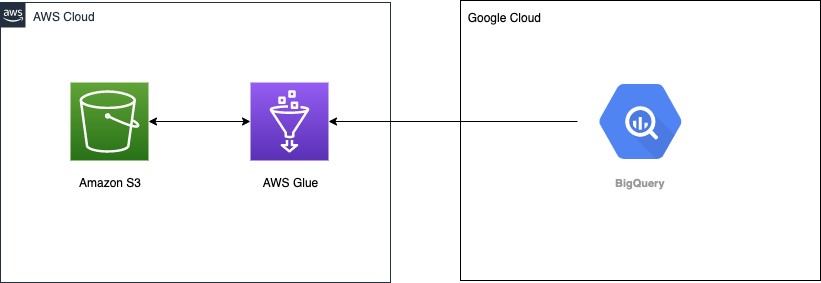

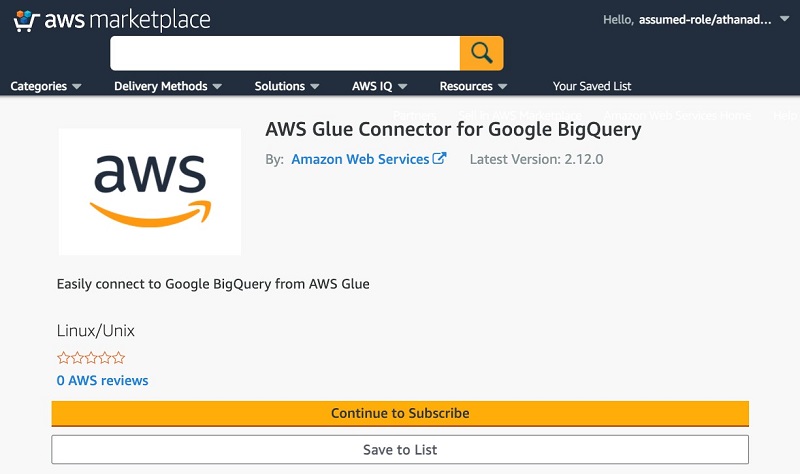

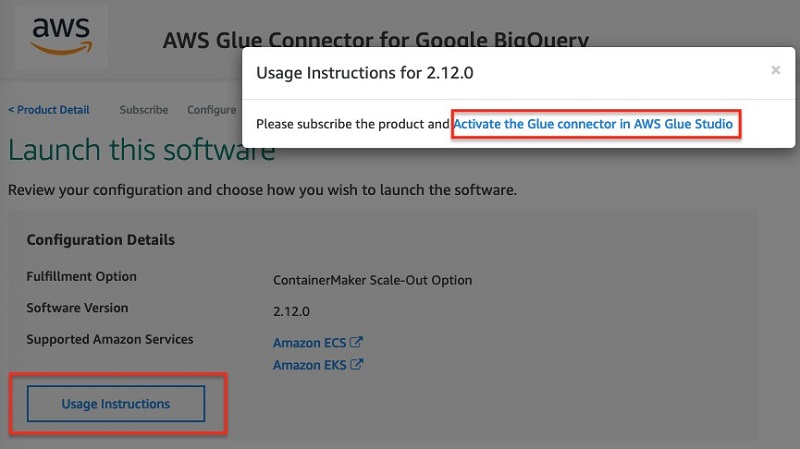
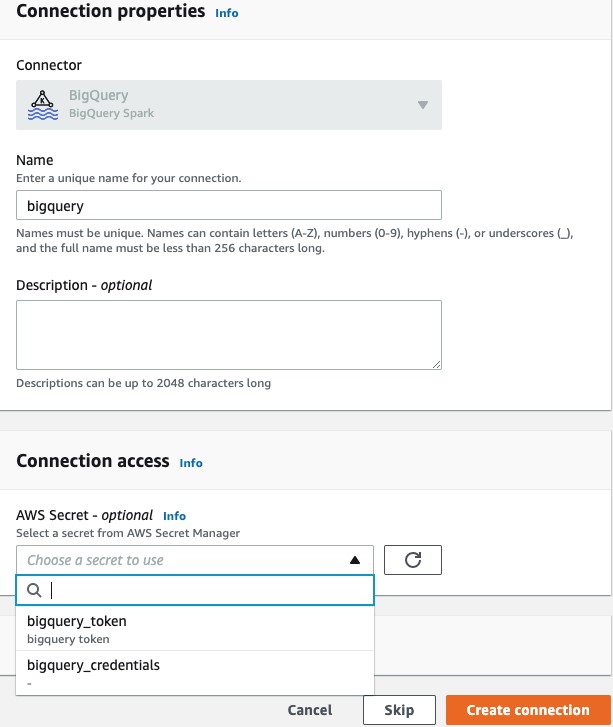





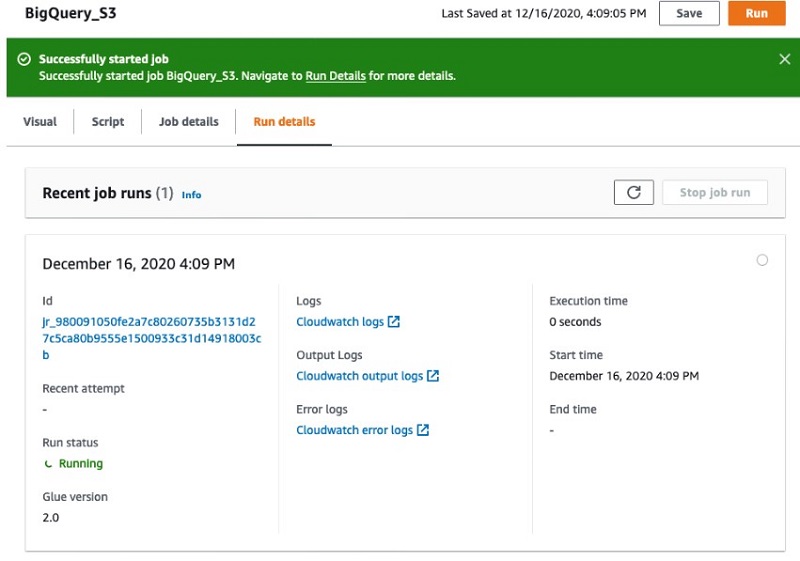

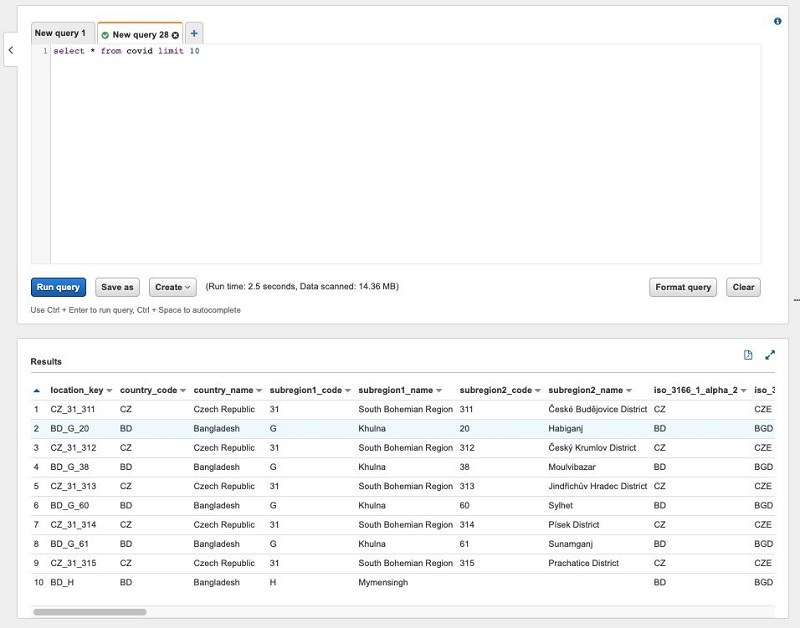
 Saurabh Bhutyani is a Senior Big Data Specialist Solutions Architect at Amazon Web Services. He is an early adopter of open-source big data technologies. At AWS, he works with customers to provide architectural guidance for running analytics solutions on Amazon EMR, Amazon Athena, AWS Glue, and AWS Lake Formation. In his free time, he likes to watch movies and spend time with his family.
Saurabh Bhutyani is a Senior Big Data Specialist Solutions Architect at Amazon Web Services. He is an early adopter of open-source big data technologies. At AWS, he works with customers to provide architectural guidance for running analytics solutions on Amazon EMR, Amazon Athena, AWS Glue, and AWS Lake Formation. In his free time, he likes to watch movies and spend time with his family.
































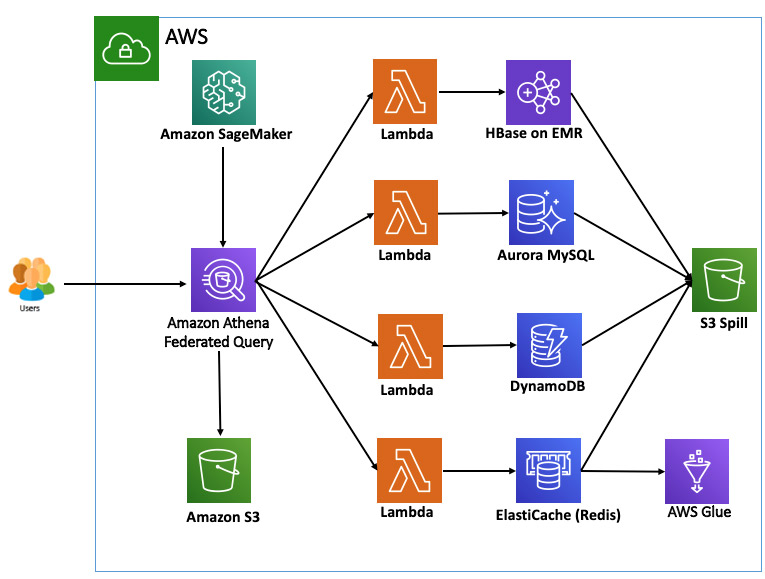



 Saurabh Bhutyani is a Senior Big Data Specialist Solutions Architect at Amazon Web Services. He is an early adopter of open-source big data technologies. At AWS, he works with customers to provide architectural guidance for running analytics solutions on Amazon EMR, Amazon Athena, AWS Glue, and AWS Lake Formation.
Saurabh Bhutyani is a Senior Big Data Specialist Solutions Architect at Amazon Web Services. He is an early adopter of open-source big data technologies. At AWS, he works with customers to provide architectural guidance for running analytics solutions on Amazon EMR, Amazon Athena, AWS Glue, and AWS Lake Formation. Amir Basirat is a Big Data Specialist Solutions Architect at Amazon Web Services, focused on Amazon EMR, Amazon Athena, AWS Glue, and AWS Lake Formation, where he helps customers craft distributed analytics applications on the AWS platform. Prior to his AWS Cloud journey, he worked as a big data specialist for different technology companies. He also has a PhD in computer science, where his research primarily focused on large-scale distributed computing and neural networks.
Amir Basirat is a Big Data Specialist Solutions Architect at Amazon Web Services, focused on Amazon EMR, Amazon Athena, AWS Glue, and AWS Lake Formation, where he helps customers craft distributed analytics applications on the AWS platform. Prior to his AWS Cloud journey, he worked as a big data specialist for different technology companies. He also has a PhD in computer science, where his research primarily focused on large-scale distributed computing and neural networks.